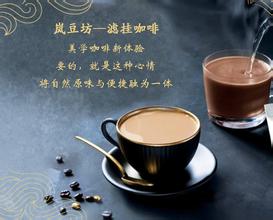Structure diagram of Fuji coffee roaster-Starbucks Italian roasted coffee beans
Structure diagram of Fuji coffee roaster
From the history of coffee in Japan, we can see that there are many coffee professionals in Japan who pursue the perfect taste of coffee. These coffee professionals experiment by proposing a variety of roasting methods, and design and manufacture many special personalized roasters according to their various roasting requirements. Because these special roasters bake special personalized coffee, each roaster has become a famous coffee expert of all genres in Japan.
The "Fuji Royal" brand is based on the various suggestions of these coffee professionals to create the same appearance as other brands, but some of the details are particularly original, in order to meet the special requirements of coffee professionals for coffee taste, so the "Fuji Royal" brand is cultivated by out-and-out Japanese coffee people. It does not pursue fashion trends, it only seeks to make roasters that can produce really delicious coffee, so Fuji Royal continues to make only one product: "roaster and bean grinder" in 1955 (Showa 8) in Osaka "Fuji Coffee Machinery production" West Japan sales office independent and set up "Fuji Ka Machinery Trading Co., Ltd." Fuji FUJI, the brother company of Fuji Coffee Machinery in Tokyo, can continue to use this brand, but in order to make a difference, it has registered a new brand "Fuji Royal FUJIROYAL". From then on, a brilliant brand "Fuji Royal FUJIROYAL" was born in the Japanese coffee industry.
In the 1970s, taking advantage of the popularity of coffee, the sales of coffee grinders continued to exceed 1,000 units per month, and production could not keep up.
In the 1980s, many professional coffee shops and coffee companies in Japan began to make extensive use of "Fuji FUJI" brand roasters
In 2004, the Fuji Coffee Machinery Factory in Tokyo was closed because of the sudden death of the fourth-generation president, Mr. Yuji Teramoto, and the "Fuji FUJI" brand had only "Fuji Royal FUJIROYAL".
In 2005, Mr. Fukuji became the fourth-generation president of Fuji Royal, and the name of the company was changed to Fujijiji.
In 2013, Mr. Fukushiro acquired Tokyo Manufacturing Machinery Co., Ltd., founded by Mr. Teramoto of Tokyo as a subsidiary. As a result, Fuji Royal has become an overwhelming share of the Japanese coffee industry and is the oldest manufacturer of coffee machinery and equipment.

Important Notice :
前街咖啡 FrontStreet Coffee has moved to new addredd:
FrontStreet Coffee Address: 315,Donghua East Road,GuangZhou
Tel:020 38364473
- Prev

An introduction to the Historical Origin of espresso in China
The history of espresso espresso is at its peak in all coffee-making methods. It maximizes the aroma of coffee, leaving excess acid, caffeine, and so on, which are done by pressurization. However, outside Italy, there has never been a standard to examine this approach. The whole world knows to buy these wonderful machines.
- Next

Can Arabica coffee beans be flushed by hand? introduction to the producing areas of varieties with flavor and taste characteristics
Arabica coffee beans can be made by hand. The flavor and taste characteristics of Arabica coffee varieties are introduced in the producing area, which is related to the way of naming the place of origin: in the case of Yegashafi, it is a small town in Ethiopia. So the coffee produced in this town is named Yegashafi, and there will also be different small producing areas and estates or cooperatives in the town, such as a place called Cochel.
Related
- Beginners will see the "Coffee pull flower" guide!
- What is the difference between ice blog purified milk and ordinary milk coffee?
- Why is the Philippines the largest producer of crops in Liberia?
- For coffee extraction, should the fine powder be retained?
- How does extracted espresso fill pressed powder? How much strength does it take to press the powder?
- How to make jasmine cold extract coffee? Is the jasmine + latte good?
- Will this little toy really make the coffee taste better? How does Lily Drip affect coffee extraction?
- Will the action of slapping the filter cup also affect coffee extraction?
- What's the difference between powder-to-water ratio and powder-to-liquid ratio?
- What is the Ethiopian local species? What does it have to do with Heirloom native species?

